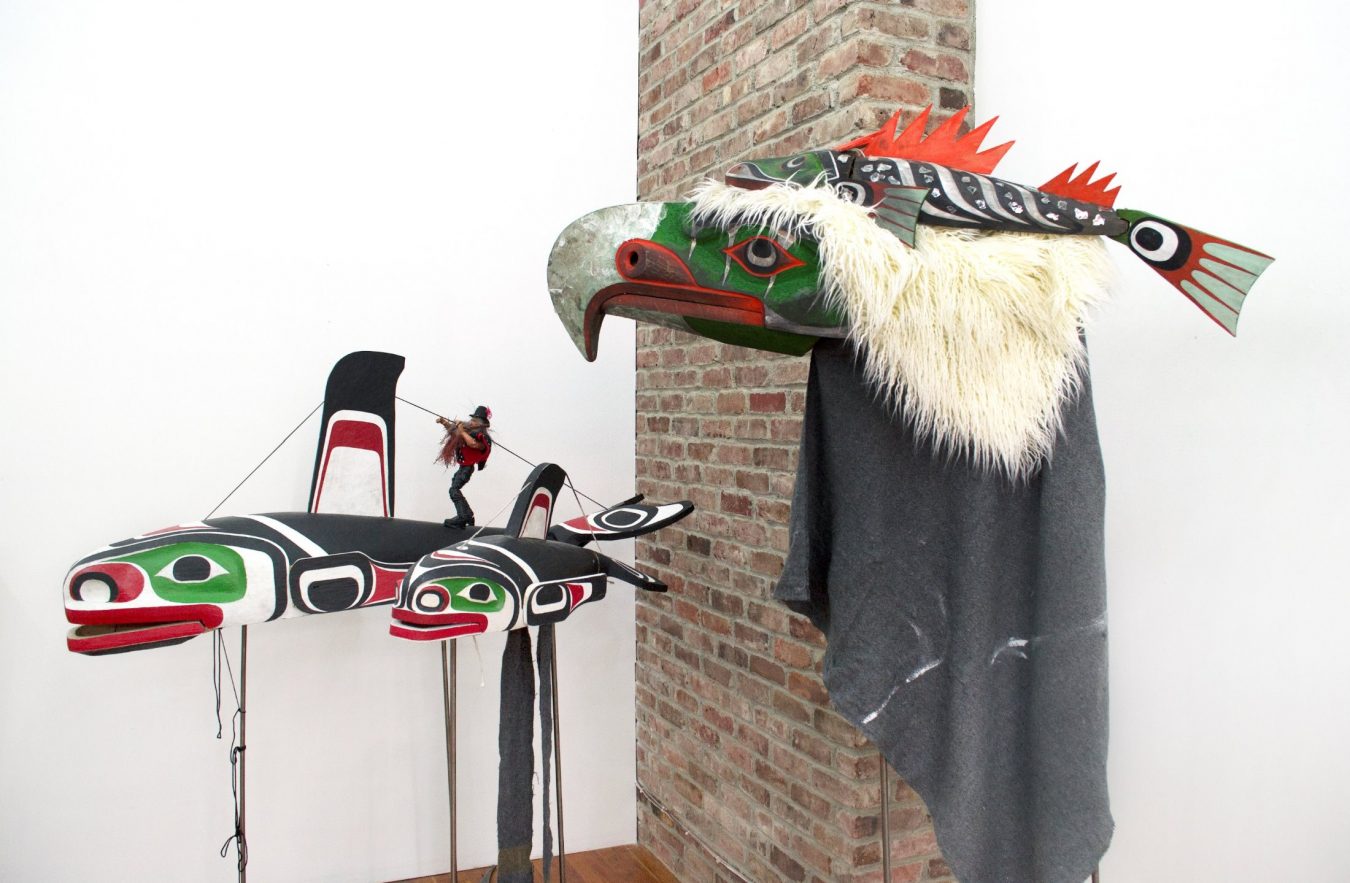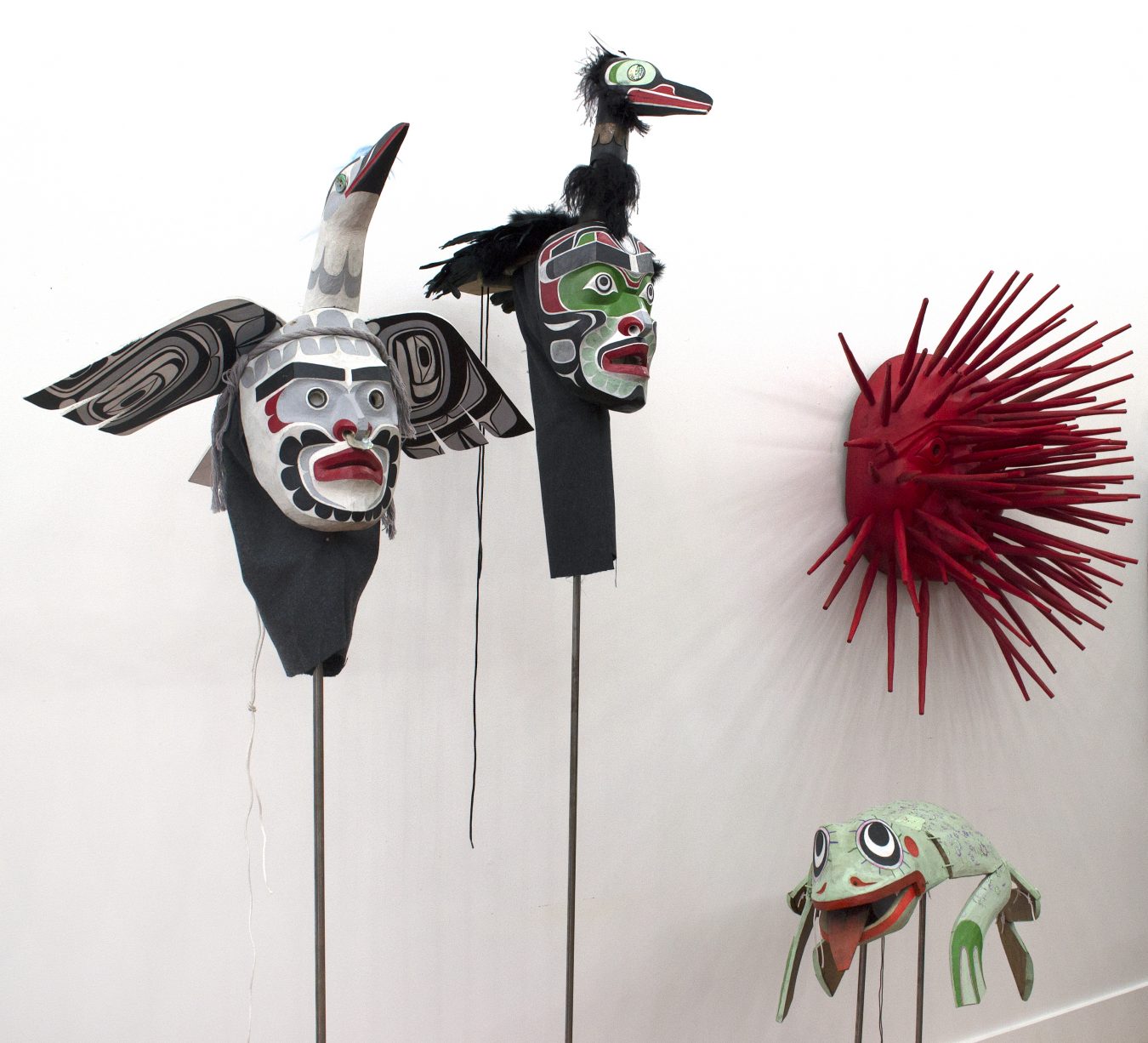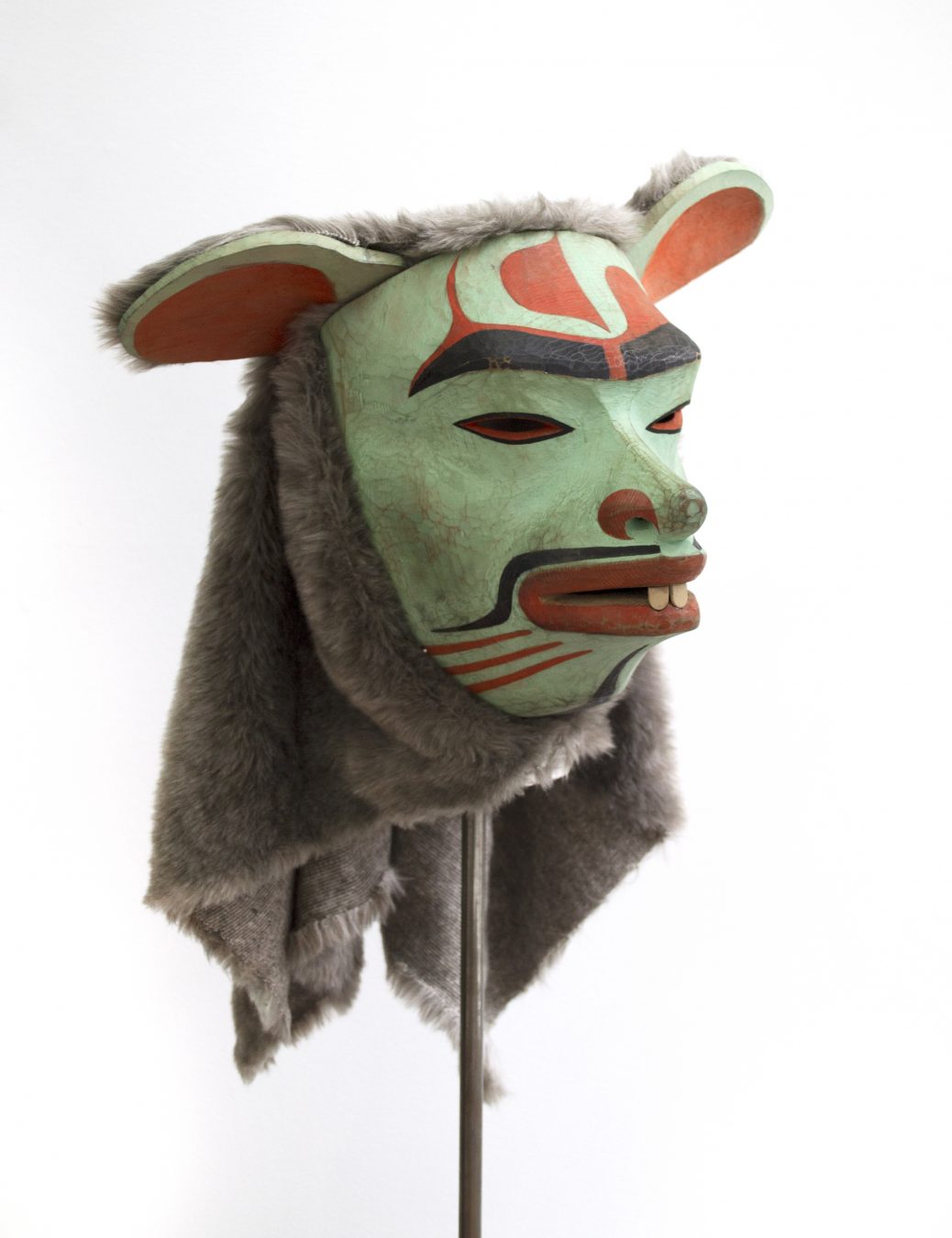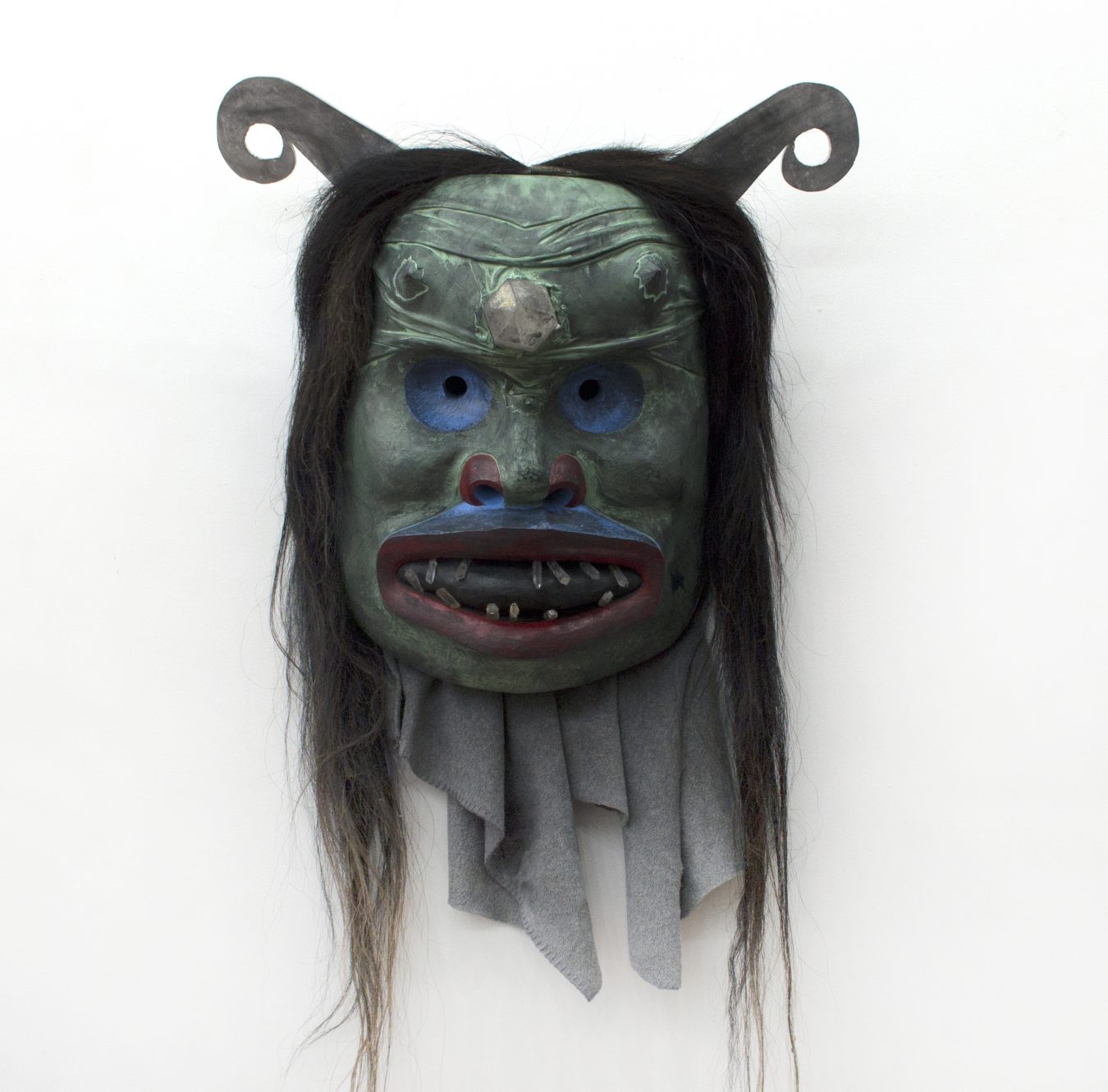Years ago, Vancouver art curator Monte Clark was struggling to find the missing element for his new gallery. Having just moved into the space, he wanted the opening to be monumental. That’s when he asked Northwest Coast First Nations artist Beau Dick to create a Tsonoqua totem pole.
“Beau did the pole, and took it all over town to all these different places and did ceremonies around the pole—singing, dancing,” recalls LaTiesha Fazakas, owner of Fazakas Gallery on East Hastings, and longtime friend of Dick’s. “And then he presented Monte with the pole. He did another ceremony in his gallery, brought him up, blessed the gallery space, and blessed Monte. When I talked to Monte days later, he said, ‘It’s like it was the thing that was missing. It was like it needed spirit. And it now has spirit. It feels like a home now with Beau’s piece in there.’ That’s the magic of Beau’s pieces: you do get this sense that something bigger and more important than yourself is going on.”
Dick’s performance art was a layer added to each and every series of his Northwest Coast carvings. For over three decades, his reenactment of his Kwakwaka’wakw people’s ritualistic dance, song, and ceremony intersected with and challenged the narrative of the contemporary art world.
Dick was raised in Alert Bay on the northern tip of Vancouver Island. He moved to Vancouver to complete high school, and later worked as an artist in residence at the University of British Columbia. He died in March 2017—just after finishing his most recent creation, Undersea Kingdom, which is on display at Fazakas Gallery until the end of November 2017. It is a poignant celebration of the artist’s life and work.
“The Undersea Kingdom are his people and their legends,” says Fazakas. “All of the figures come from a Kwakwaka’wakw story based on a young boy, Yola Kamay.” Lined up along the walls of the gallery, rich wooden masks depicting strong, heavy creatures of the water stand tall and prosperous. A large bear mask is honed with a seal-like, furry head covering and detailed, turquoise eyes. In the corner, a two-foot-long whale hovers above the ground. On it, a mini Dick action figure is dressed in a top hat with long dark hair and a scruffy beard, instructing the whale on where to swim next.
Just months ago, these pieces were on display at one of the contemporary art industry’s most important exhibitions, Documenta 14, which took place this year in Athens, Greece and Kassel, Germany. The theme of the 2017 exhibit was immigration and geographic identity, two issues that aligned well with Dick’s work as a human rights advocate and cultural preservationist.
“The Kwakwaka’wakw winter ceremonies have been likened by academics to early Greek theatre—the Dionysus ceremonies,” says Fazakas. “There has always been that connection between Greek and the Kwakwaka’wakw people. That, coupled with the Syrian refugee crisis in Europe, really struck Beau. In his eyes, Kwakwaka’wakw people have been welcoming refugees since the first settlers came. For him, [Canada] is his land, his country, and his nation, and Canadians are refugees. Beau reached outside of his niche into the realm of the contemporary, but also into the most influential contemporary exhibition in the world. Whether [viewers] understood it or not, his spirit in masks is really magnetic for people.” Dick’s original plan was for the Undersea Kingdom masks to be performed in a traditional Kwakwaka’wakw winter ceremony at the Parthenon. “He thought that by doing the ceremony, blessing the space, blessing Athens, and really challenging the political turmoil that is going on there right now, that it could have a ripple effect on the spiritual realm, that it could create a better world,” says Fazakas. “Beau and his work became this beautiful, complicated place where everything comes together. Life, art, politics, objects, object making, community, theory—all of those things can be discussed and debated. His art is not always just about the piece itself, it’s about cultural background, cultural circumstances, cultural production, and then about performance and how that translates into a political act.”
Over the course of his lifetime, Dick created hundreds of masks that have been displayed around the world. In 1998, he was featured in the re-opening of Canada House in London, England; he performed during the Opening Ceremony at Expo 1986; and some of his most important work is now stationed in Gatineau’s Canadian Museum of History and at the Royal BC Museum in Victoria.
Although he died before being able to perform at the Parthenon, with Undersea Kingdom, Dick created a new space for other First Nations artists. What he leaves behind is an opportunity, says Fazakas, for the younger generations of artists to experiment and challenge the western way of thinking about politics and civilization in Canada. “I think we have an opportunity for artists to do more experimental work that does speak from Indigenous history, but isn’t dismissed or negated because it’s not in the ‘traditional niche,’” she says. “It will challenge the contemporary context as it won’t speak to a westerner history. It’s a place where they don’t have to do one or the other. There isn’t a line drawn in the sand where you’re either a traditional artist or a contemporary artist.”













